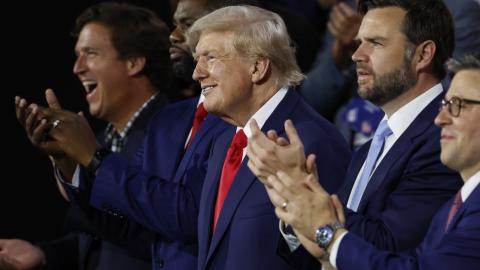Delusion is the conviction that something that is imaginary is instead real. A good example of this is President Biden’s recently-issued executive order on artificial intelligence.
If a president could wave a magic wand and tell businesses how to operate, he or she might do so, as the executive order attempts. But the president has no such magic wand. Indeed, the president has no statutory authority whatsoever to order anyone to do anything about artificial intelligence, save for dispensing federal funds to research the subject. The executive order pretends otherwise.
People who want to believe that the president has unlimited powers may be comforted by the accompanying “Fact Sheet” claiming the executive order would “protect Americans from potential risks of A.I. systems,” alongside a great many other wonderful outcomes. But it is not a “Fact Sheet;” it is a hope sheet.
Because the White House does not itself have the authority to regulate anything related to A.I., the executive order instead instructs various executive agencies to craft new regulations on the subject. These include the Homeland Security, Energy, Commerce, Defense, State, Transportation, Education, and Justice Departments, as well as the Intelligence Community and the National Science Foundation.
Unfortunately for the White House, none of these agencies has the necessary statutory authority to regulate A.I. And if Congress were to try to provide such authority to said agencies, it would take a lengthy bill that would require review by most, if not every, legislative committee in Congress. That simply is not attainable in the foreseeable future. Despite Congress’s fascination with artificial intelligence, there is little movement towards a critical mass of support, much less a consensus, on exactly what new statutes are needed.
Without clear statutory authority from Congress, these agencies are unlikely to craft A.I. rules that would withstand judicial scrutiny. The only legal defense for agencies like the Federal Trade Commission and the Federal Communications Commission, which are “encouraged” to adopt A.I. rules by the executive order, would be said “encouragement.” Just imagine the embarrassment of government lawyers attempting to argue such a defense in front of a federal judge.
Even beyond the issue of legal authority, countless issues remain. Chief among them is that the executive order seems to be calibrated for large corporations utilizing a specific type of artificial intelligence. The order speaks of “red-teaming,” “sharing information,” “work-sharing agreements,” and many other terms that make sense for some forms of artificial intelligence developed by large entities, but not for others. Even businesses intent on assisting the administration in implementing the executive order—for whatever reason—would be challenged to interpret the executive order as applied to every instance of artificial intelligence.
At its core, the order seeks to use regulation to control the development of novel technologies. Time and time again, central government design of new technologies has proven itself to be a slow, clumsy, and inefficient process whose results are obsolete often from the very beginning. What pioneering A.I. companies would submit themselves to such control, when the authority for such control is so dubiously claimed? They would inevitably go offshore to friendlier, more forward-looking jurisdictions.
Indeed, countless entities around the world are developing artificial intelligence. Some operate under the thumb of autocratic governments with bureaucrats reviewing—and delaying and distorting—every step in the development pipeline. Other entities are developing artificial intelligence in countries where innovation isn’t stifled. It does not take much intelligence—artificial or otherwise—to guess where greater innovations will occur.
Nor does it make sense to assume that artificial intelligence will be limited by national boundaries. If artificial intelligence proves itself useful in performing certain activities in one country, it will likely be useful in others as well. It is irrational to assume that the United States can restrict the development of artificial intelligence while hoping that other, less regulated, and more efficient forms of the technology developed elsewhere will not cross our national borders. Intelligent software, not government regulation, will dominate artificial intelligence.
Artificial intelligence seems poised to be the way of the future. Technology policy relying on artificial government power cannot accompany it. America can and must do better.





















